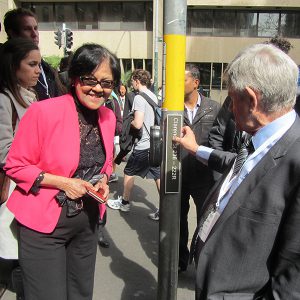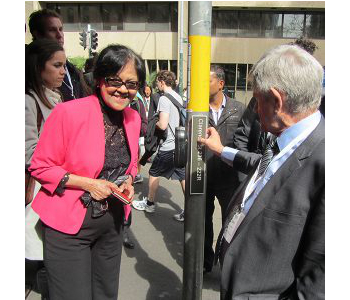
Getting everyone on the same page was the message from UD keynote speaker, Goh Siam Imm. The technical director of Universal Design Department, Singapore, told F2L, “developers in Singapore need to have a good relationship with us. Because we are a government agency we have the power to push programs through and developers need to show their support.” Speaking at the Universal Design Conference in Sydney, she said there was a competitive aspect among developers who wanted to be first at implementing change. “We always invite people from the industry to visit places and share the experience of UD. It is good that they can see for themselves what is happening and it encourages them to do something positive.”
Key initiatives of the Accessibility Master Plan involves the promotion of UD to government agencies, the building industry and the public. One of the golden rules is getting everyone together. “Singapore has had the same ruling party for many years with a big majority so a lot of programs are more likely to get through Parliament. Everybody needs to think hard about UD and this can be achieved in depth with a small group of people.” However, it was critical to have a “high level” person to push ideas across.
Singapore has fast-tracked its efforts to build an inclusive environment to support its ageing population. All trains and 85 per cent of public buses are wheelchair accessible and all public buses are expected to have wheelchair access by 2020.
Goh described UD as a continuous process. “There is no such thing as ‘you have done it’. I always believe the environment changes, habits change, the world dynamics change with technology moving in but the fundamentals have to be there.”
One of the challenges the world faces is dementia. “For years people have known about dementia and cognitive problems and it tended to be associated with a small group of people. Because people are living longer the chances of getting dementia is high. It has become everyone’s problem. It has gone beyond people sitting in a wheelchair it can be a hearing or vision impairment. We need to make the environment more enabling and the enormity of this is what will probably stimulate people into re-looking into UD. People will come to realise we have to go beyond the standard now to what will be a dementia-friendly environment. Access for all, all the time.”

